5 Yoga Tips for A More Enjoyable Lizard Pose
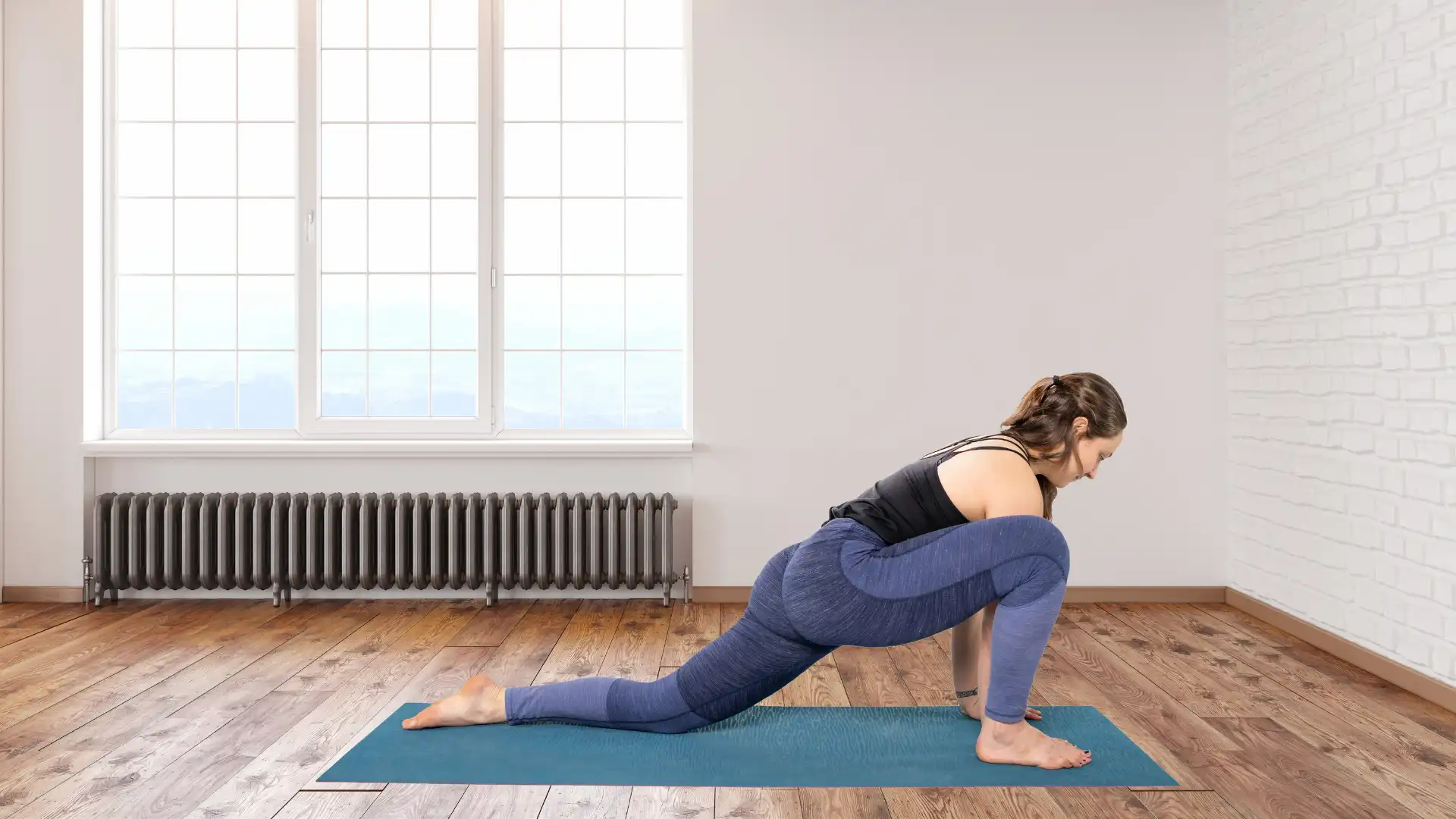
Article At A Glance
Do you struggle with Lizard Pose? We often strive for picture-perfect postures in our yoga practices, but straight lines and perfect angles don’t necessarily equate to healthy, functional alignment – especially in challenging yoga postures like Lizard Pose. Learn how to embrace the best version of Lizard Pose for your body here.
We are all very unique and different – straight down to our bones. So alignment in yoga needs to be adjusted and adapted to fit our individual needs. We often strive for aesthetic, picture-perfect postures in our yoga practices, but in reality, straight lines and perfect angles don’t necessarily equate to healthy, functional alignment – especially in challenging yoga postures like Lizard Pose (Utthan Pristhasana).
A little while ago, a student of mine asked for advice on modifying Lizard Pose. She commented: “My thigh can’t seem to stay straight – it wants to poke out to the side. Then I am having problems with my shoulders. Even getting to where my shoulder is by my knee is troublesome.”
First of all, from my perspective, it’s totally okay for your front thigh to be angled outward. After all, your femur (thigh bone) sits to the side of and forward of your acetabulum (hip socket), as shown in the picture here.
Because we are made up of a collection of different angles in our bones (that are uniquely individual to our own bodies), straight lines don’t always work well in yoga practice. Often, varying degrees of angles may feel better for most people.
In reality, the body does not move in pure plane motion. So, for some people, it might be healthier for their anatomy to bring the knee wider in poses like Lunges and Lizard. It likely will feel better for them to create some abduction (by moving their leg slightly away from the midline of the body).
It is always best to gauge our practice based on our internal feelings. When we strive to create an “ideal” mold of what a pose should or shouldn’t look like, we lose the individuality and variability that we each possess in our unique anatomical structure. We know very well that we are not all the same on the outside—and the same rings true on the inside as well. It’s true, we are all made differently. We each possess unique bones and joints that allow for different ranges of motion.
Use These 5 Tips to Modify Lizard Pose for Your Unique Body:
Tip 1: Keep Your Feet Hip-Width Apart
Statistically, women have wider-set hips than men. This would affect the angle created between the pelvis and thigh bones. This would, therefore, affect how Lizard Pose (and so many other postures) feel. Thus, we should always practice based on internal sensations rather than external aesthetics.
The way that the femur and the hip socket are aligned means that in forward-facing hip-openers (like Warrior I, Lunge, and Lizard), it’s wise to set up for the pose with your feet at least hip-width apart on your mat.
This means that your right foot would be to the right side of the midline, and your left foot would be to the left side of the midline. This alone might alleviate any discomfort you’re feeling by creating less compression in your hip joints.
Tip 2: Angle Your Toes As You Come Into Lizard Pose
Next, you can create even more space within your hip joints with one simple movement: Turn the toes of your front foot outward toward the front corner of your mat.
Hopefully, when you come deeper into the pose (by bringing your hands to props or the mat), this may create more space in the hip joint. You can walk your foot farther out to the side to get even more room.
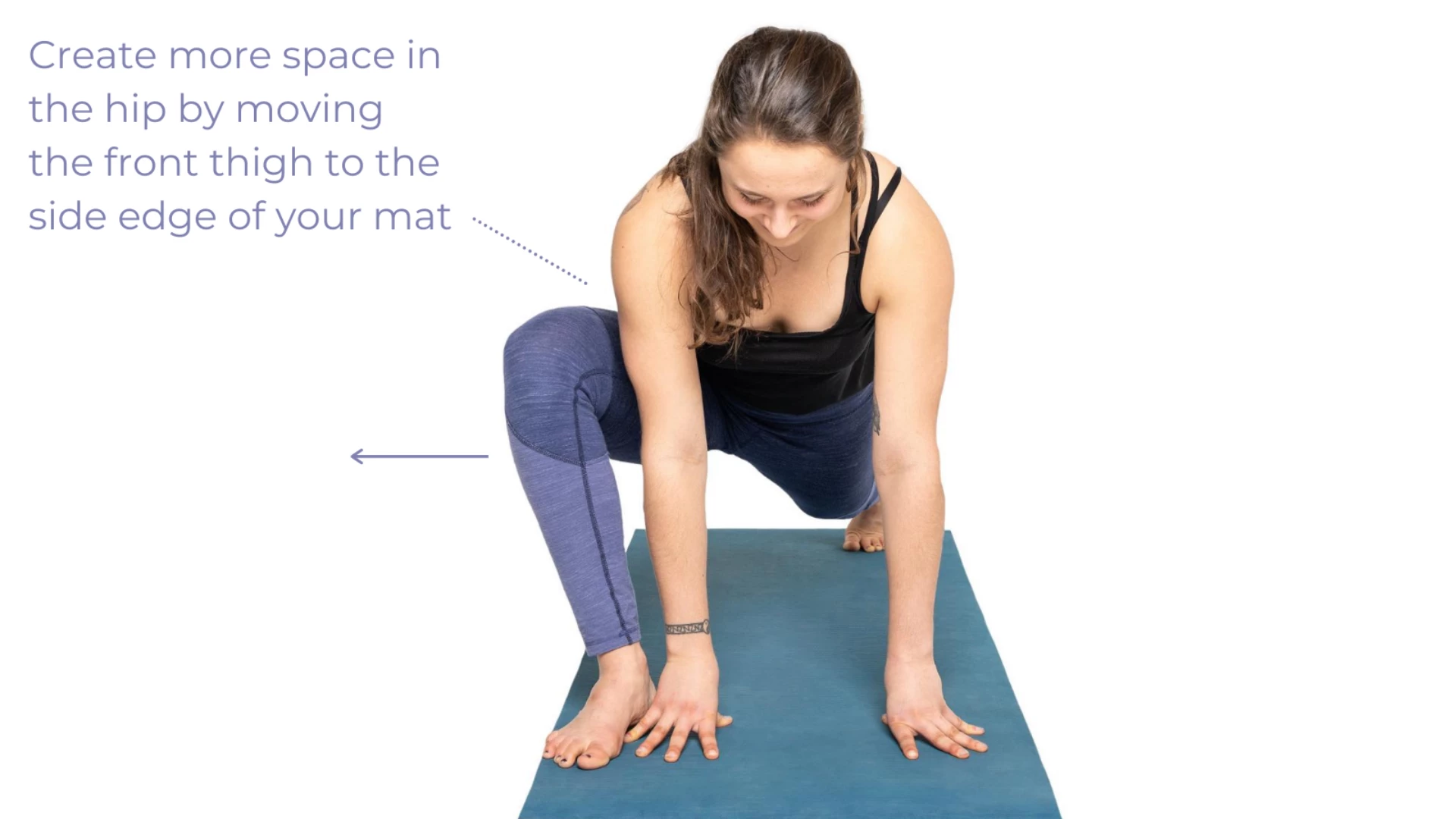
Tip 3: Lower Your Back Knee
Another way to explore this pose is with the back knee on the ground. This takes some of the weight off the hip joint and can be a great variation to practice.
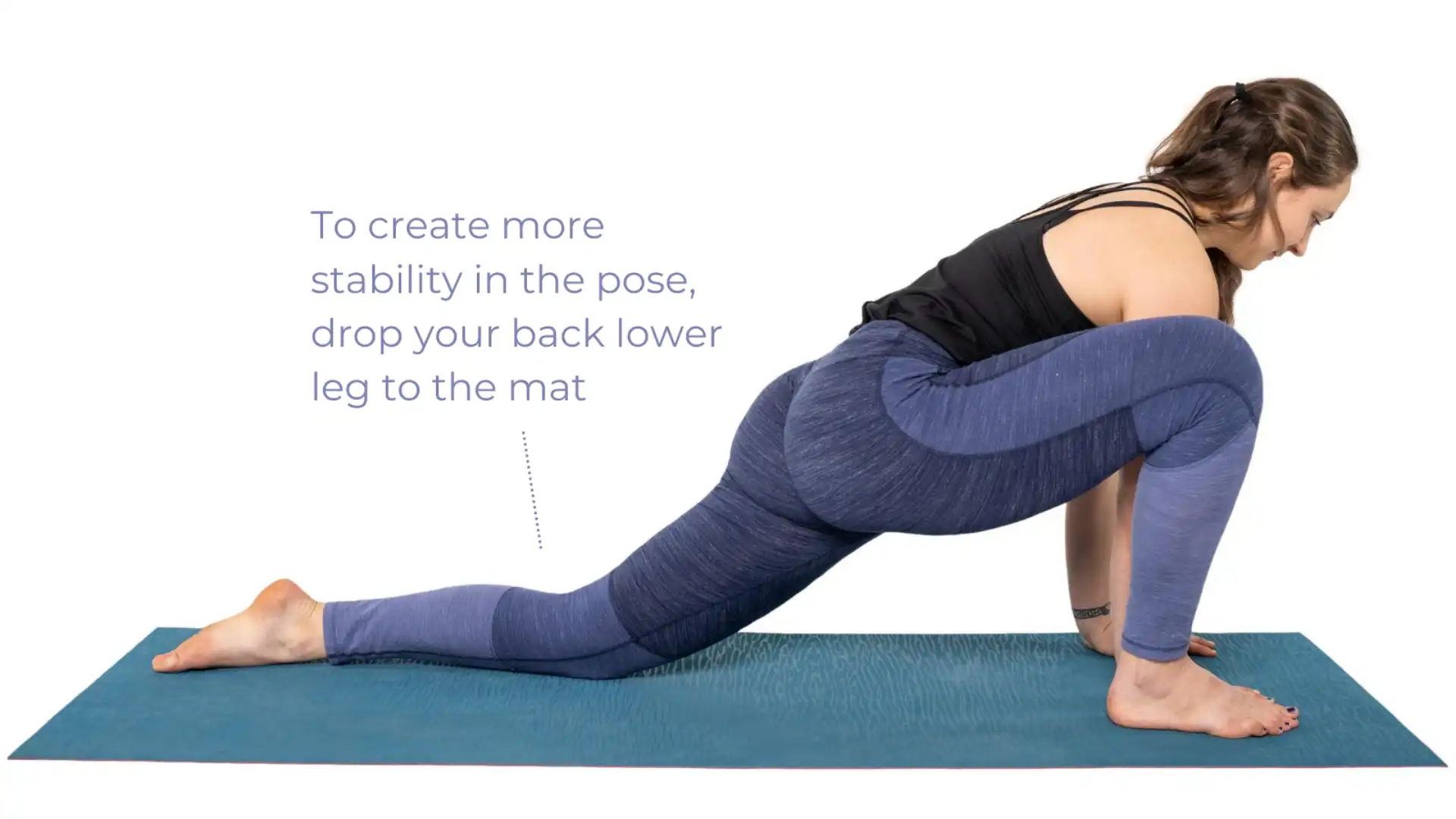
Tip 4: Activate the Legs in Lizard Pose
Before lowering the weight of your torso forward and down, create a strong activation in your legs and back.
Kick back firmly through your back heel and lift your thigh bone up away from the floor.
Lengthen your spine by stretching the crown of your head forward and your tailbone back as you release your hands down.
Eventually, you might place your elbows on a bolster, block, or floor. However, remember that this pose is not about how far down you go. It’s fine if your shoulders never go lower than your knee – as long as you feel a sufficient stretch.
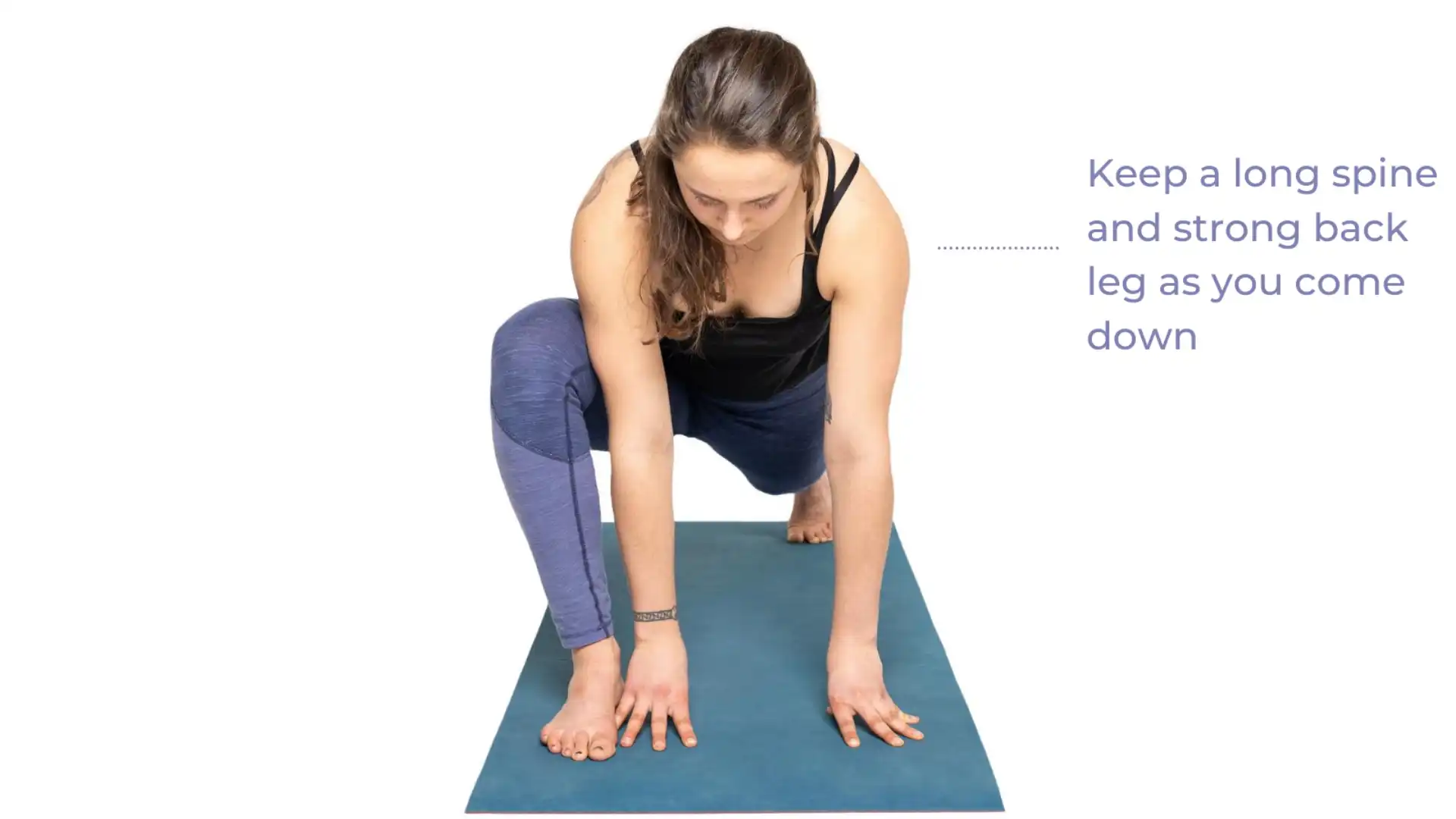
Tip 5: Put It All Together to Create Your Own Unique Lizard Pose
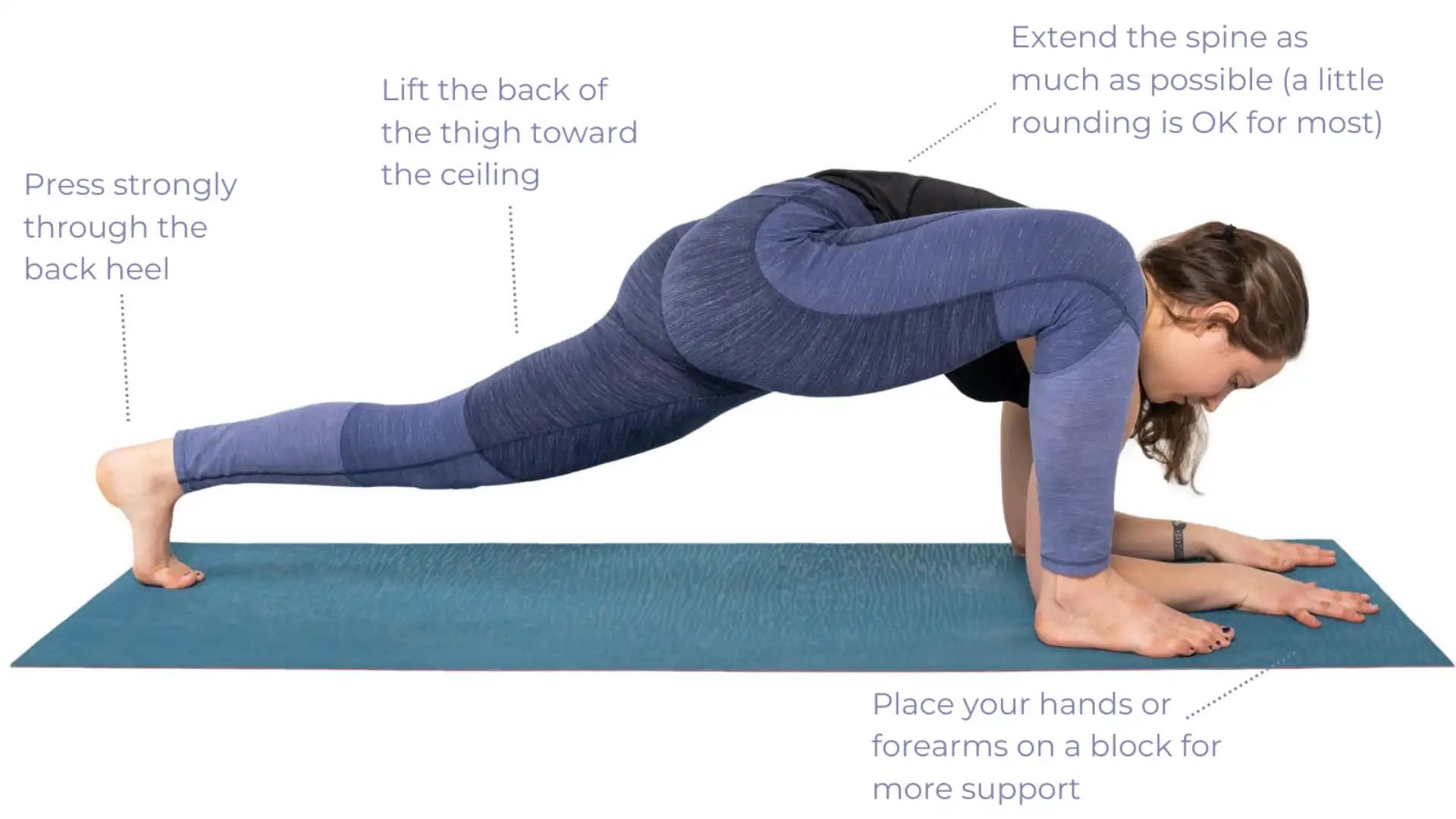
The Takeaway on Lizard Pose Practice
Be respectful of your body. Since hips are joints, there is no joy to be had in straining to push your limits. Rather, let go of your ego, breathe deeply, and work on holding the pose longer while staying relaxed in your breath, allowing your body to change old patterns of movement slowly.
Remember that Lizard Pose is a big hip opener, so before coming into this pose, do some warm-ups like hip circles, Supine Pigeon, and/or Lunges. Enjoy these tips for Lizard Pose!




